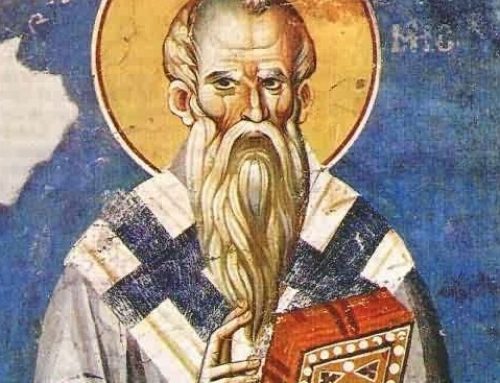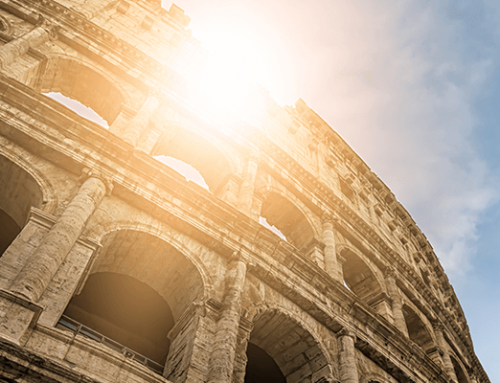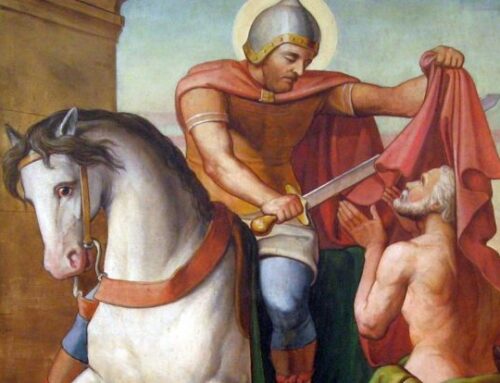Excavations have revealed forty grave structures and over two hundred single tombs which have existed side by side, and in some cases, overlapped, since the end of the 1st and throughout the 2nd Century of Christianity.
“L’Osservatore Romano” has announced that as of next spring, the necropolis located along the Roman Via Triumphalis will be open to the public. An archaeological site of great historic importance is about to open next to the Vatican car park
Excavations have revealed forty grave structures and over two hundred single tombs which have existed side by side, and in some cases, overlapped, since the end of the 1st and throughout the 2nd Century of Christianity. The Holy See’s newspaper said the stratigraphy showed that towards the mid 2nd Century, this area of land was covered by a muddy landslide, which sealed the earliest graves. Other newer ones were later added above these. The Holy See’s newspaper explained how “the graves were clustered onto a number of islands, spread out across the hill and down into the valley. They were connected to each other via irregular paths that joined at the bottom, on Via Triumphalis. The single graves, which were the most common type, belonged to the middle-lower social classes. They contain ceramic sheets, with the cremated remains placed directly in the earth, one metre under ground. These have terracotta protrusions that look similar to smokestacks, which were used to insert food offerings during the libation rite.
An ustrinum was also found along the path which divided the necropolis in two. This was the site of the funeral pyre, marked by overlapping layers of terracotta and earth deposits, with coal fragments, pine kernels and combusted pine cones, used to light the pyre. Above the ustrinum, excavators found some simple pits which had been dug into the earth, for ground burials.
“L’Osservatore Romano” pointed out that “there was a series of nobility graves, graves arranges in walls and underground graves that dated back to the 1st Century of Christianity.” “Most of these are quadrangular barrel vaults, decorated with flower or linear motifs, with a red plaster exterior. Thanks to their exceptional state of conservation, the altars, sarcophaguses and the various furnishings have shed light on aspects of the funeral rite about which little was known until now. In order to keep the souls of the dead trapped in the afterlife, long nails were fixed onto the openings of the protruding tubules. Meanwhile, other wider graves, have mosaic floors with the so-called “Salomon’s knot” that symbolised a grating.”
The numerous inscriptions have made it possible to reconstruct a historical-social fabric that was unknown until today. Indeed, the more grandiose tombs belonged to imperial freedmen who were quite well off but of whom no memory remained. The Natronii family stands out in this group. In this family’s tomb (20-40 B.C.), excavators discovered a complete marble portrait of Tiberius Natronius Zmaracdis, aged 4 years, 4 months and 10 days. In his stele, he appears good looking, according to his mother Natronia Sinphyle’s wishes; so good looking in fact that his parents named him Venustus, despite the expression of melancholy on his face. The Passieni family, on the other hand, owned a columbarium (50-70 B.C.), decorated with two beautiful altars which attest to the Caesaris family being the owners. The first altar is richly decorated with a fruit festoon, tied to two rams’ heads. It is dedicated to Flora by her parents: Passiena Prima and Tiberius Claudius Optatus, one of Nero’s freedmans who was tabularius and patrimoniis that is, archivist for the administration of the emperor’s private estate. On the second altar, a portrait of the deceased is positioned at the top of the altar, which was offered to Passiena Prima by her freedman Lucius Passienus Evaristus. The Passieni were therefore a group of freedmans who may have had direct or indirect ties with Gaius Sallustius Crispus Passienus, Agrippina’s second husband, Nero’s mother.
This noble character, who according to some sources was assassinated by his august wife, had a great number of properties which Agrippina inherited and eventually became part of the imperial estate. “One could ask, at this stage, whether the Horti Agrippinae, which are said to be located near the Vatican, are part of this estate,” “L’Osservatore Romano” pointed out.
Among the objects unearthed, was a small marble statue of a servus lanternarius, a rather unusual subject for a sculpture, the use of which was unknown until now. This slave had the task of waiting for his master to return home at night, through the front door, a protective gesture which was copied on the tomb. The gesture also served to highlight the painful and dark path towards the final resting place. But the real scoop in these incredibly interesting finds was the discovery of two artists’ tombs. One is dedicated to sculptor Tiberius Claudius Thesmus, by his wife – 1st half of the 1st century. It shows the deceased man sculpting a bust, with his dog at his side. The other tomb is dedicated to Fabia, by her husband, Alcimus, a stage designer.
Alcimus was one of Nero’s servants; he worked as a stage designer in the Theatre of Pompey. This is why he appears with a chisel in his hand, surrounded by the tools of his trade: the set square, compasses, a level and a surveyor’s cross. Two women of Ancient Rome, two wives, who with their love, devotion and the esteem they felt for their husbands, made it possible for us to learn about two individual artists who were rarely mentioned in historical accounts of that era.
“When one speaks of the Vatican Necropolis, they generally refer to the underground cemetery under St. Peter’s Basilica, which grew along Via Cornelia, around the tomb of the Prince of the Apostles,” the Holy See’s newspaper highlighted. “But as of spring 2012, this will no longer be so, because a second Necropolis will be definitively opened to the public. It runs along the ancient Via Triumphalis, the road that ran round the Vatican hill, connecting imperial Rome to the ancient city of Veio.” Walking via the Vatican post office and just a bit beyond the pharmacy, no one would know it existed because the exterior is covered in modern buildings.
However, one need only go a few metres down into the opening that has been created between the Vatican car park and the new multifunctional Santa Rosa building (where the head offices of the Vatican Telephone Service are located) to go back in time two thousand years. “It is like finding oneself before a mini Pompey in cemetery form, because it is possible to reconstruct whole chunks of daily “funerary” life, which had previously been interrupted and forgotten about,” Giandomenico Spinola, curator of the Greek and Roman Antiquity section of the Vatican Museums, told “L’Osservatore Romano”. Mr. Spinola is now directing the excavation, with the help of Leonardo di Blasi and Monica Ricciardi. Although excavation work is still in progress, the area upon which the Necropolis is built, on Via Triumphalis, was discovered between 1956 and 1958 by Filippo Magi, during the construction of the car park. However, the only people who had access to it were scholars. Then, in 2003, during the building of the new Santa Rosa garage, a new section of the Necropolis was discovered, which was only remained open to the public between 2006 and 2008.
The excavations that are under way have made it possible to connect two sections of the same Necropolis, which has now been transformed into one large single museum space, over one thousand square metres big. The Pope’s newspaper underlined that “the Necropolis, which dates back to the early imperial era, extends along the Vatican hill’s north eastern side, near the Magna Mater sanctuary and some imperial gardens that belonged to Agrippina. There were also some mansions present in the area. Caligola built a naumachia for these and Gaianum built a circus for chariot drivers to practice. This was later restored by Nero. According to tradition, this was the circus where Peter suffered martyrdom.”







Leave A Comment
You must be logged in to post a comment.